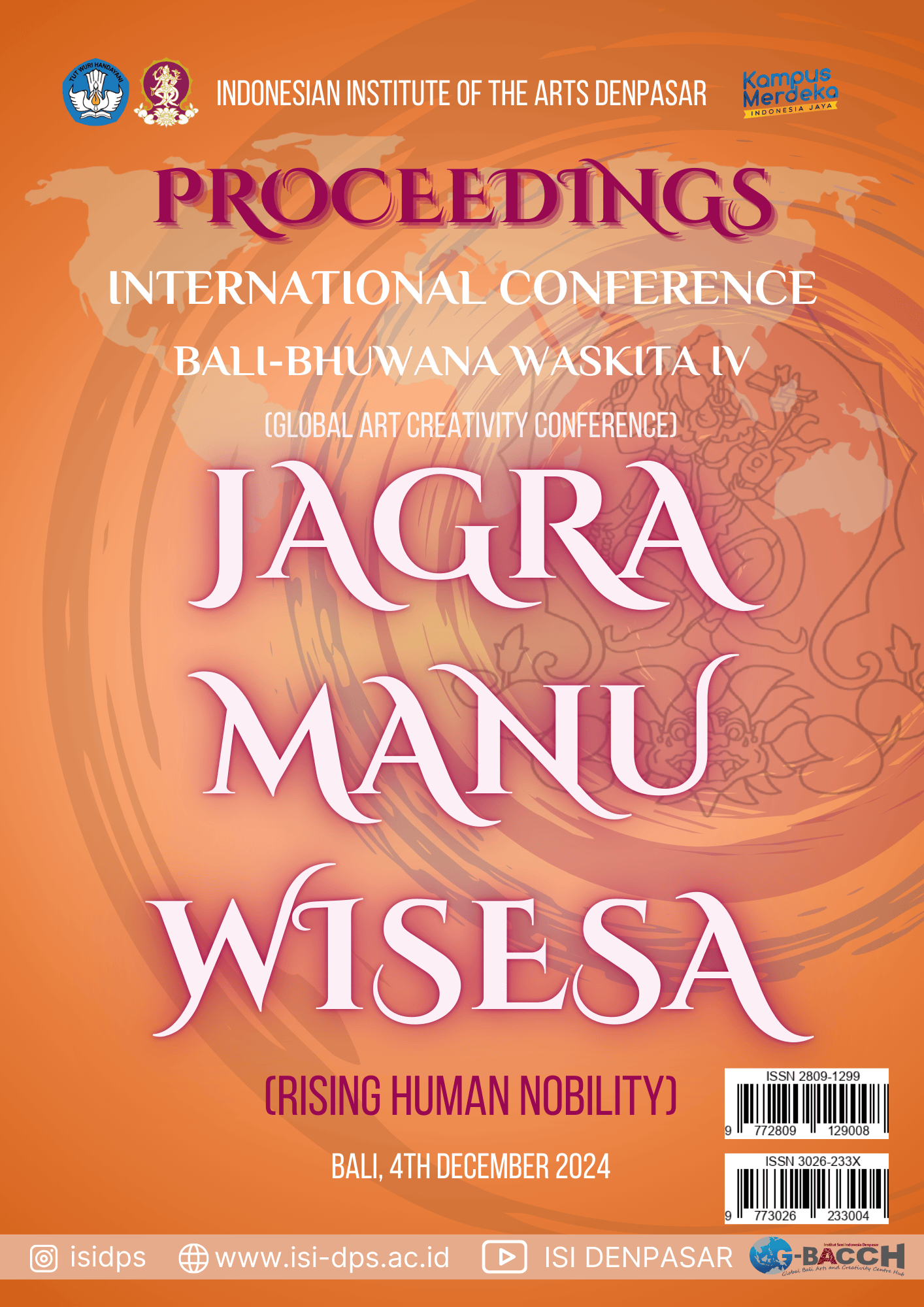“KUNO KINI” HERMENEUTIC STUDY OF CONCEPTUAL PHOTOGRAPHY BY GUNG AMA
DOI:
https://doi.org/10.31091/bbwp.v4i1.575Keywords:
Kuno Kini, Hermeneutics, Gung Ama, Conceptual PhotographyAbstract
I Gusti Agung Wijaya Utama S.Sn or Gung Ama is a photographer who has a distinctive characteristic in his work. Gung Ama's interest in photographic works produced in the 1930s encouraged a deeper exploration of ancient photographic styles. The concept of Kuno Kini was created by Gung Ama by photographing using an Afghan box camera, combining ancient darkroom techniques with experimental touches of modern media. The study of Kuno Kini in this article will refer to hermeneutics, how the interpretation and understanding of texts, history, and culture occur in a dialectical and historical process, refer to hermeneutics from Gadamer who classifies four stages of hermeneutic theory in interpreting or understanding. Gung Ama packages his concern about current problems and pours it into the form of conceptual photographic work Kuno Kini, as a form of criticism and self-reflection that is expressed visually in symbols and signs on his photographic elements.
Downloads
Published
How to Cite
Issue
Section
License

This work is licensed under a Creative Commons Attribution-NonCommercial-ShareAlike 4.0 International License.




